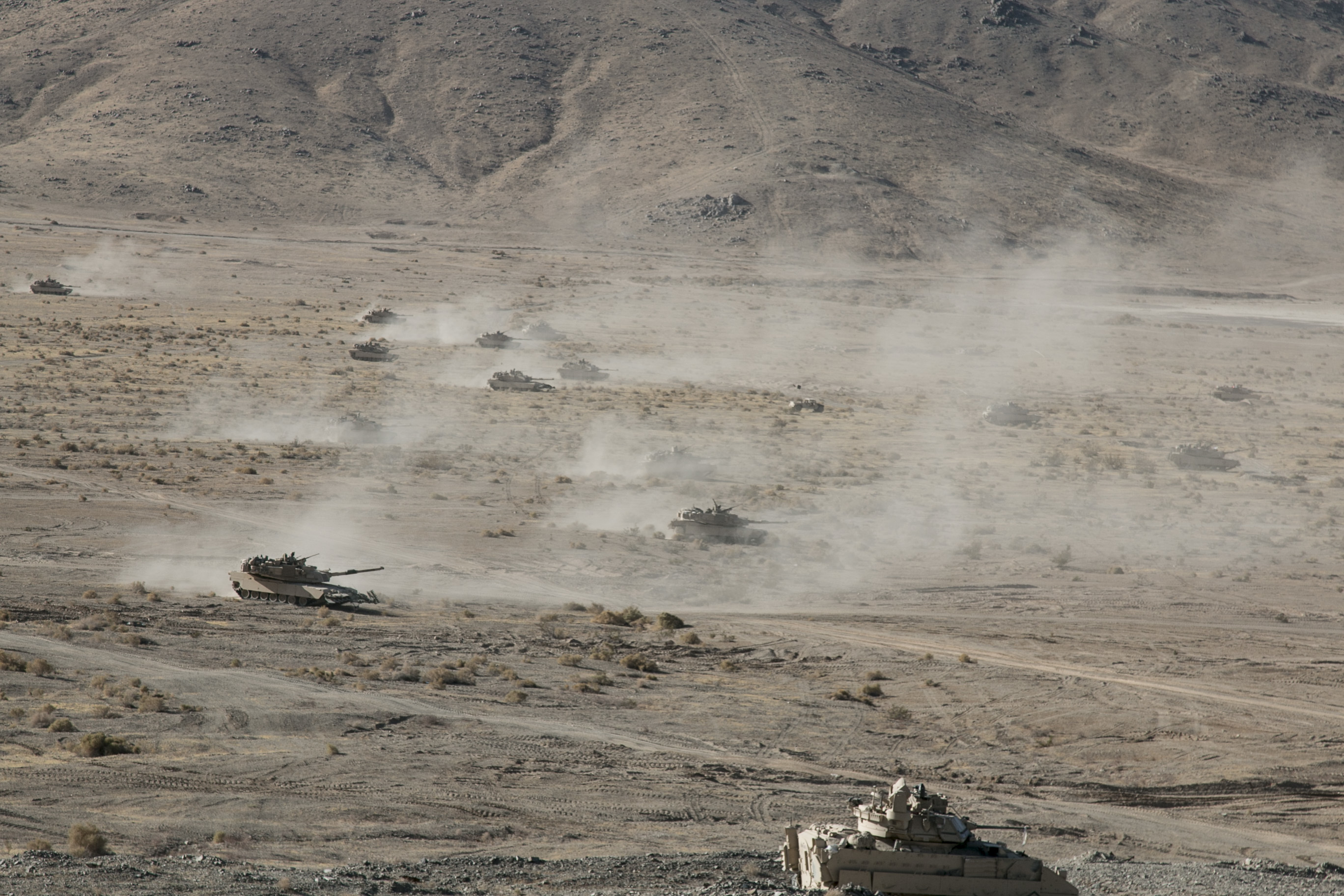
The AMP tank round would give M1A2 Abrams tanks more lethality while combining the functions of four existing rounds—anti-armor, breaching and anti-personnel capabilities—in a single piece of ammunition.
by Mr. Corey D. Hall
The M1A2 Abrams main battle tank and its current suite of ammunition exist to defeat the hardest targets on the battlefield, normally enemy armored vehicles. The Army’s focus on counterinsurgency operations over the past decade presented mainly softer targets. In response, the Army developed and fielded the M1028 canister round, providing some increased short-range capability against enemy personnel. Still, the nature of operations did not provide significant opportunities to bring the Abrams’ lethality to bear in combined arms maneuvers.
The Army expects the nature of future conflict to be complex, with adversaries employing tactics across the full spectrum of operations. In his guidance on readiness, Army Chief of Staff Gen. Mark A. Milley has specified the need to address a broad target set, including both nation-state armed forces and targets representative of our counterinsurgency operations. As the nation could call on the Army to address this wide range of threats, with transitions between fights on little to no notice, a new round—the 120 mm Advanced Multi-Purpose (AMP), XM1147, High Explosive, Multi-Purpose with Tracer—will enable unit and strategic readiness for combined arms formations.

BACK TO BATTLE-TANK BASICS
A barrage of U.S. Army M1A2 Abrams tanks from the 3rd Battalion, 8th Cavalry Regiment, 3rd Armored Brigade Combat Team, 1st Cavalry Division push forward to engage targets during the live-fire portion of National Training Center (NTC) 17-01 at Fort Irwin, Calif., Oct. 14, 2016. “Each fight we executed at or better than a 90 percent operational readiness rate for tanks and Bradley Fighting Vehicles which is a testament to their disciplined approach to fleet readiness,” said Col. John Woodward, the brigade commander. NTC 17-01 provides U.S. military units and personnel with realistic pre-deployment training scenarios in all aspects of armed conflict. (U.S. Army photo by Staff Sgt. Leah Kilpatrick)
The AMP round is in engineering and manufacturing development. When fielded in FY21, it will replace four current tank munitions: the M830 High Explosive Anti-Tank round, M830A1 Multi-Purpose Anti-Tank round, M1028 Canister round and the M908 Obstacle Reduction round. The current suite of 120 mm tank ammunition is mostly purpose-designed, with one round addressing a single type of target. By contrast, AMP would address the targets of all four rounds while also adding capabilities. AMP extends the range of the Abrams’ anti-personnel lethality, addressing the threat of dismounted, anti-tank guided missile teams. It also would provide the formation more efficient means of engaging hardened structures such as walls and bunkers. The broad array of target sets that AMP addresses prepares the armored brigade combat team (ABCT) to be ready for the complex and diverse nature of the future battlefield.

FUTURE AMP
This conceptual drawing shows what the AMP round will look like when it is fielded in FY21. As compared with the four tank rounds it will replace, it adds better breaching capabilities and anti-personnel and anti-armor effects. Shrinking the number of tank rounds in use also eases logistics operations, making ABCTs and combatant commanders more nimble. (Image courtesy of Orbital ATK)
Readiness for the future fight requires a return to combined arms operation, and with AMP the Abrams tank would be able to contribute with increased capabilities. Current 120 mm ammunition has effects on some structures but does not facilitate efficient entry. Breaching an enemy-occupied building requires placing infantry Soldiers at risk of entering structures through fixed points (i.e., doors and windows) or putting engineers in close proximity to the target to emplace breaching assets, such as explosive charges or battering rams. AMP will provide the ability to create a breach in a fortified structure—including double-reinforced concrete—that would allow Soldiers to enter, and deliver devastating effects to make their entry safer. The combination of these capabilities in the AMP round will provide the ABCT additional combined arms capability in all operations, enabling them to seize, retain and exploit the initiative.
In addition to improving unit firepower, combining the capabilities into a single round supports strategic readiness by reducing the logistics burden associated with the current suite of ammunition. The current 120 mm inventory includes the M830/A1, M908 and M1028 cartridges, for light armor defeat, obstacle reduction and anti-personnel capabilities, respectively. Combatant commanders responsible for readiness across the range of operations—from conventional war between nation-states to counterinsurgency—must maintain sufficient stocks of all four rounds. In turn, field support units are tasked with maintaining and transporting them. By combining those capabilities into one round, theaters would require fewer total assets to address the same mission while providing combatant commanders maximum flexibility and minimizing maintenance and transport burdens.
CONCLUSION
The M1A2 Abrams will remain in service to the nation for decades to come. As changes in the geopolitical landscape—and the conflicts associated with those changes—occur more rapidly, ABCTs must be ready to respond. The 120 mm AMP program supports that readiness objective, enabling lethal effects against a wide range of targets while reducing inventory requirements and allowing combatant commanders to remain prepared for full-spectrum operations in their theaters.
For more information on the 120 mm AMP cartridge, contact Audra Calloway, Picatinny Arsenal Public Affairs Office, at 973-724-7243 or audra.e.calloway.civ@mail.mil.
- COREY D. HALL is an item manager for the Product Manager for Large Caliber Ammunition, assigned to the Project Manager for Maneuver Ammunition Systems within the Program Executive Office for Ammunition. He holds a master of engineering degree and a B.S. in biological systems engineering, both from Virginia Tech. He is Level III certified in engineering and is a member of the Army Acquisition Corps.
This article will be published in the October – December 2017 Army AL&T magazine.
Subscribe to Army AL&T News, the premier online news source for the Acquisition, Logistics, and Technology (AL&T) Workforce.







